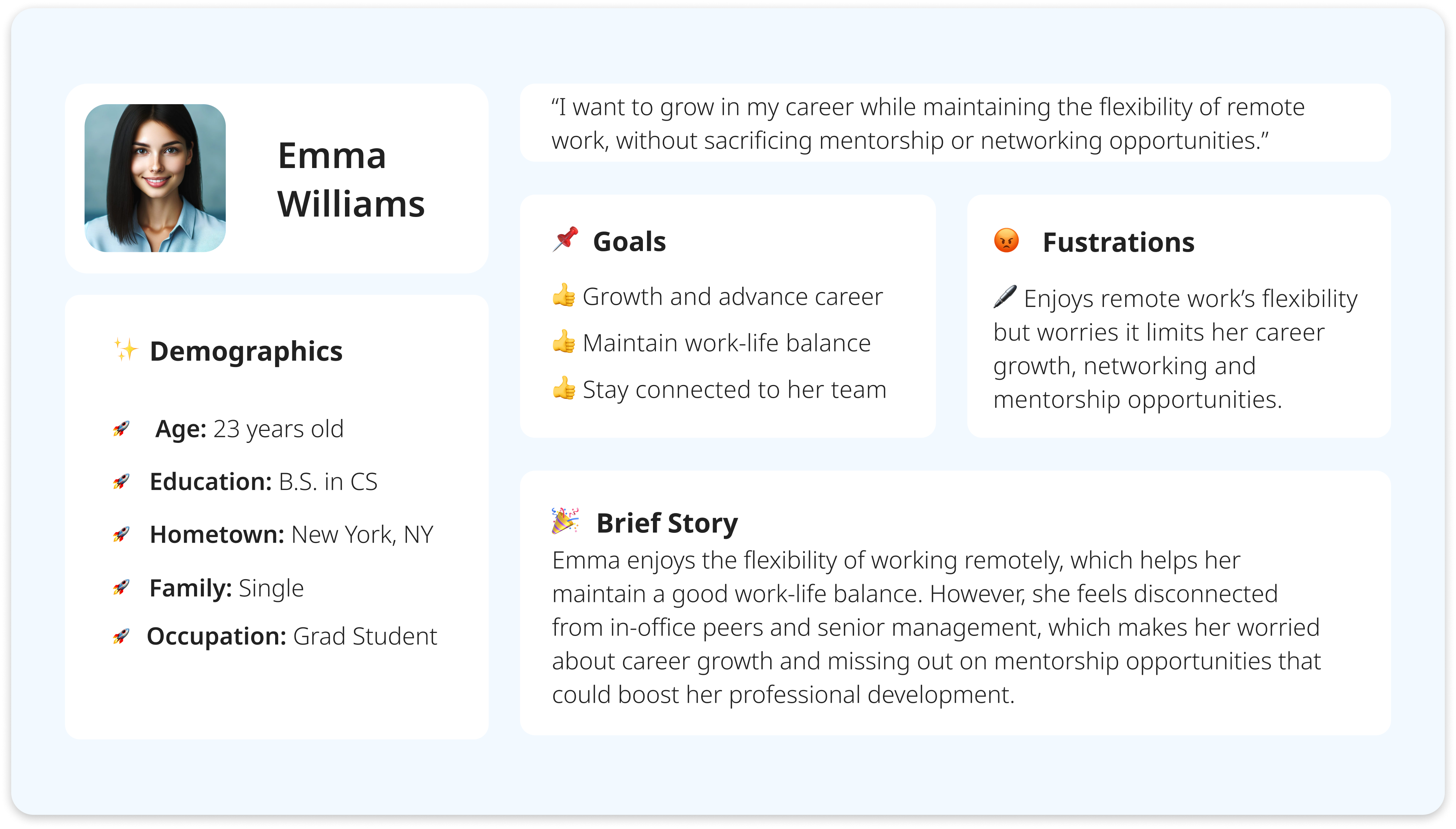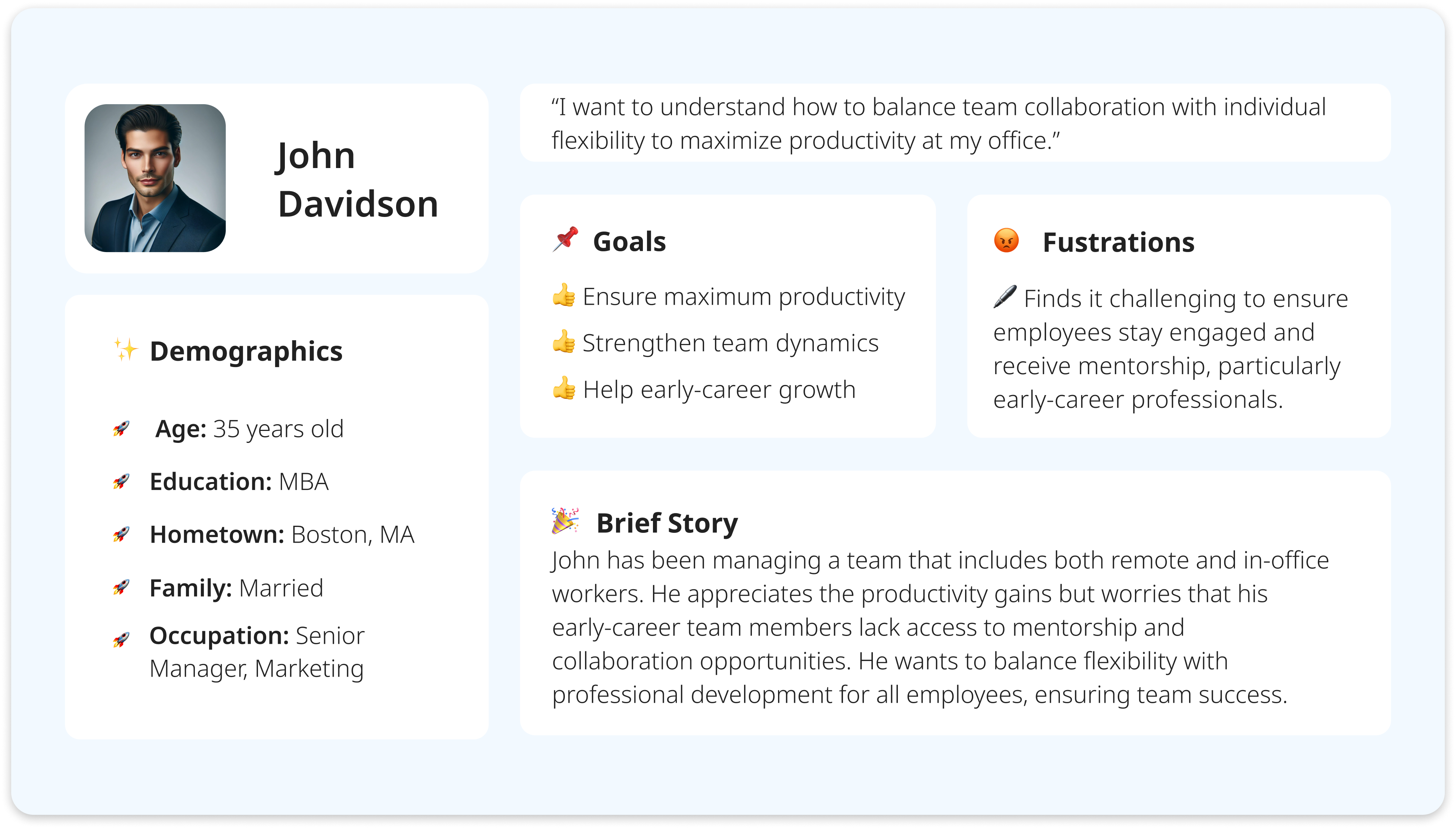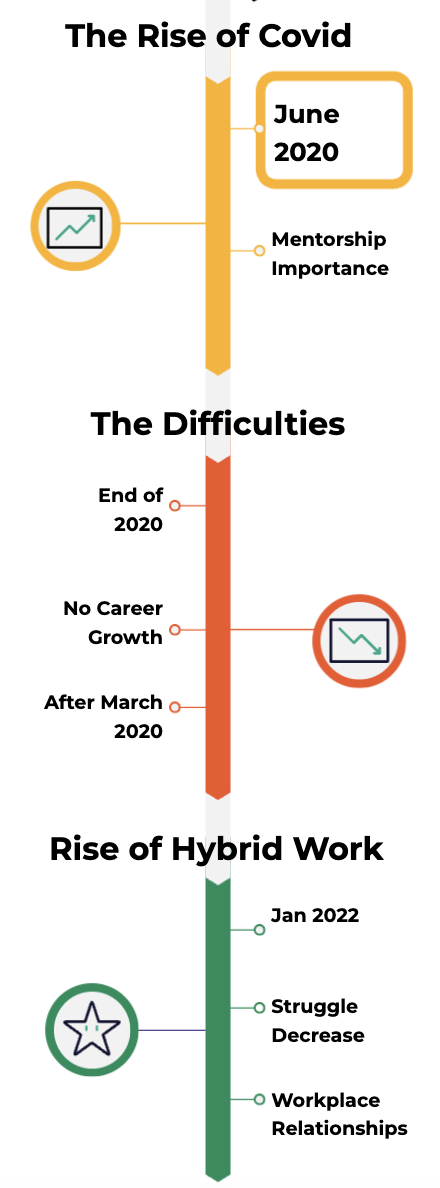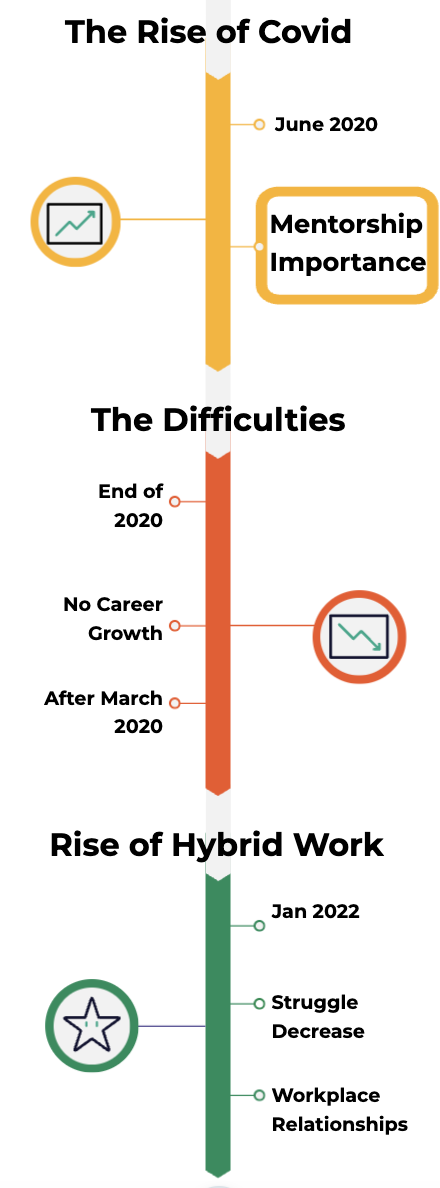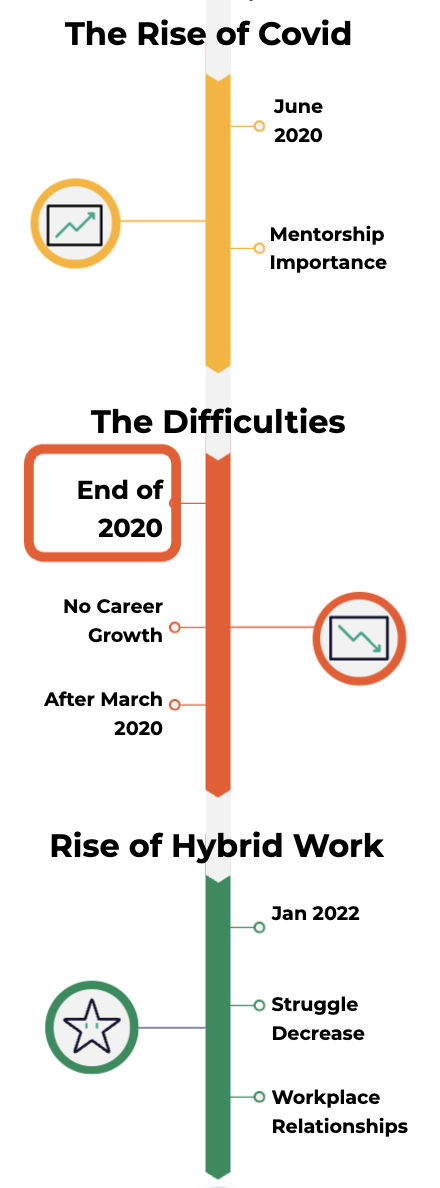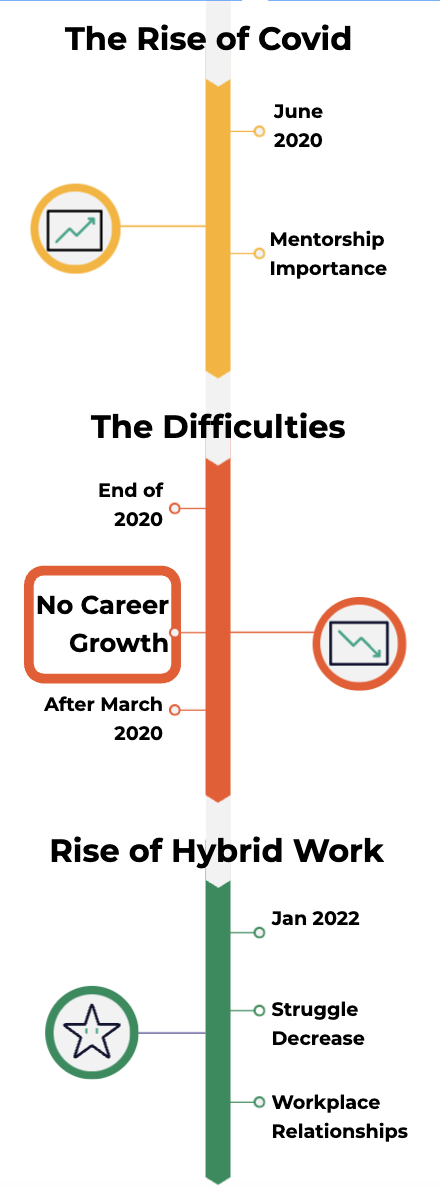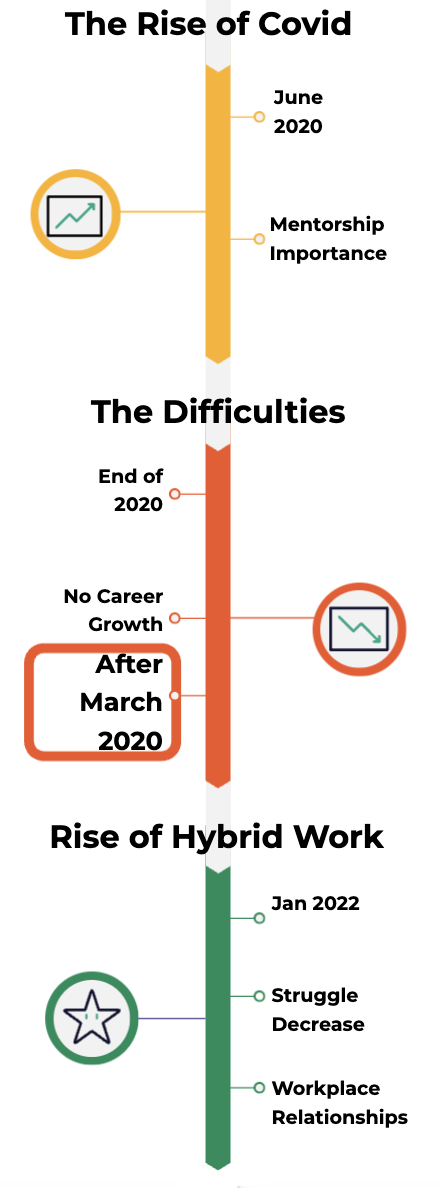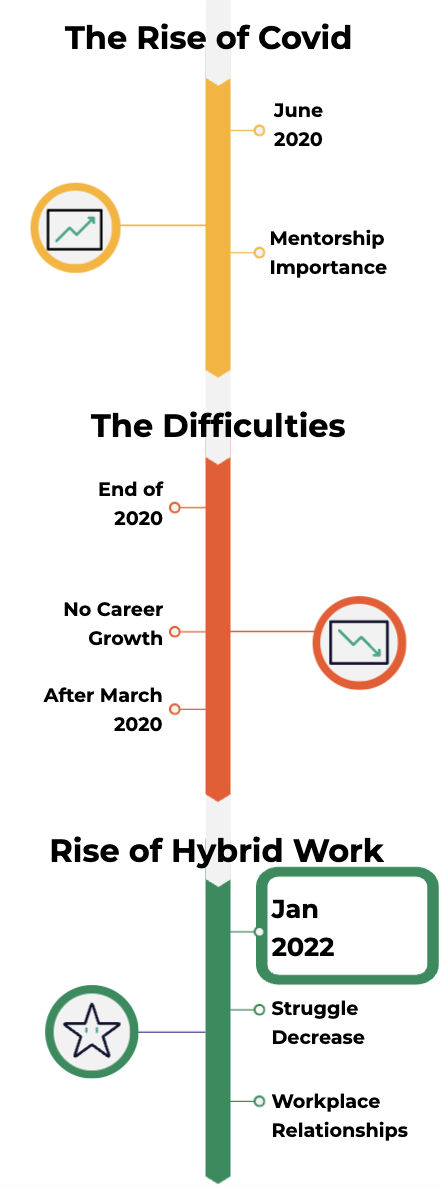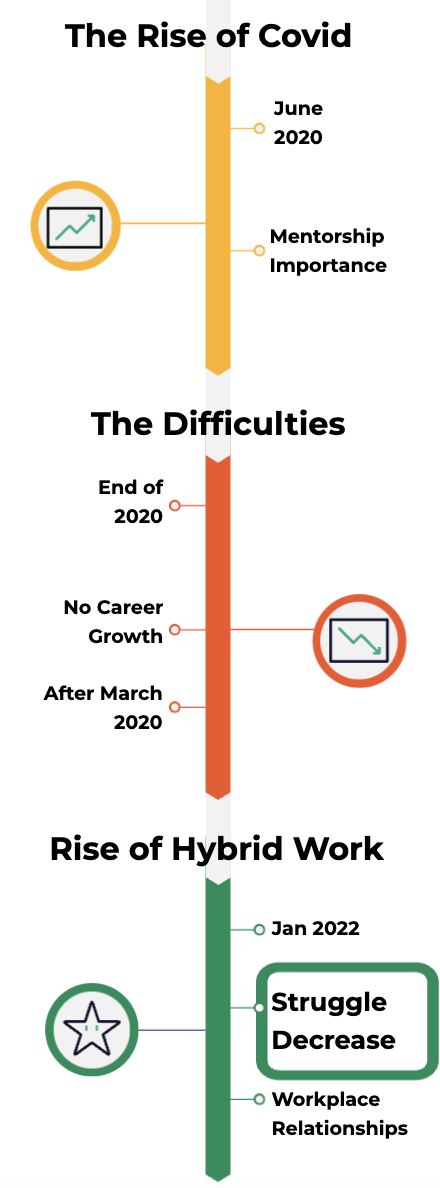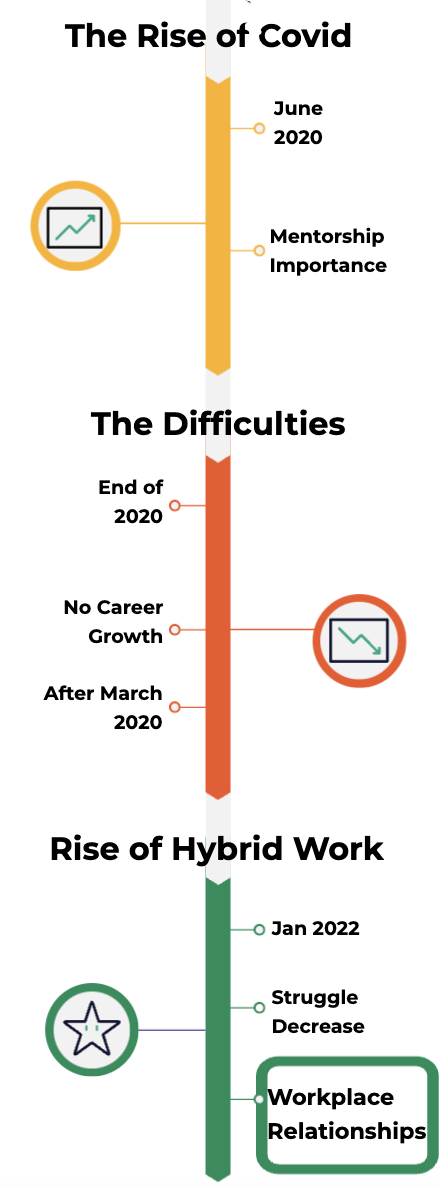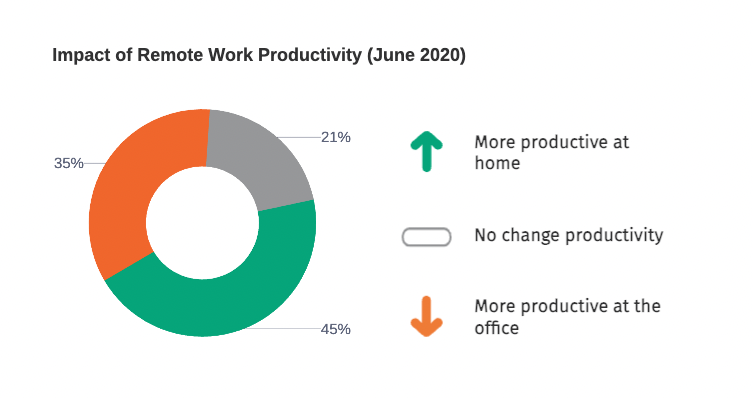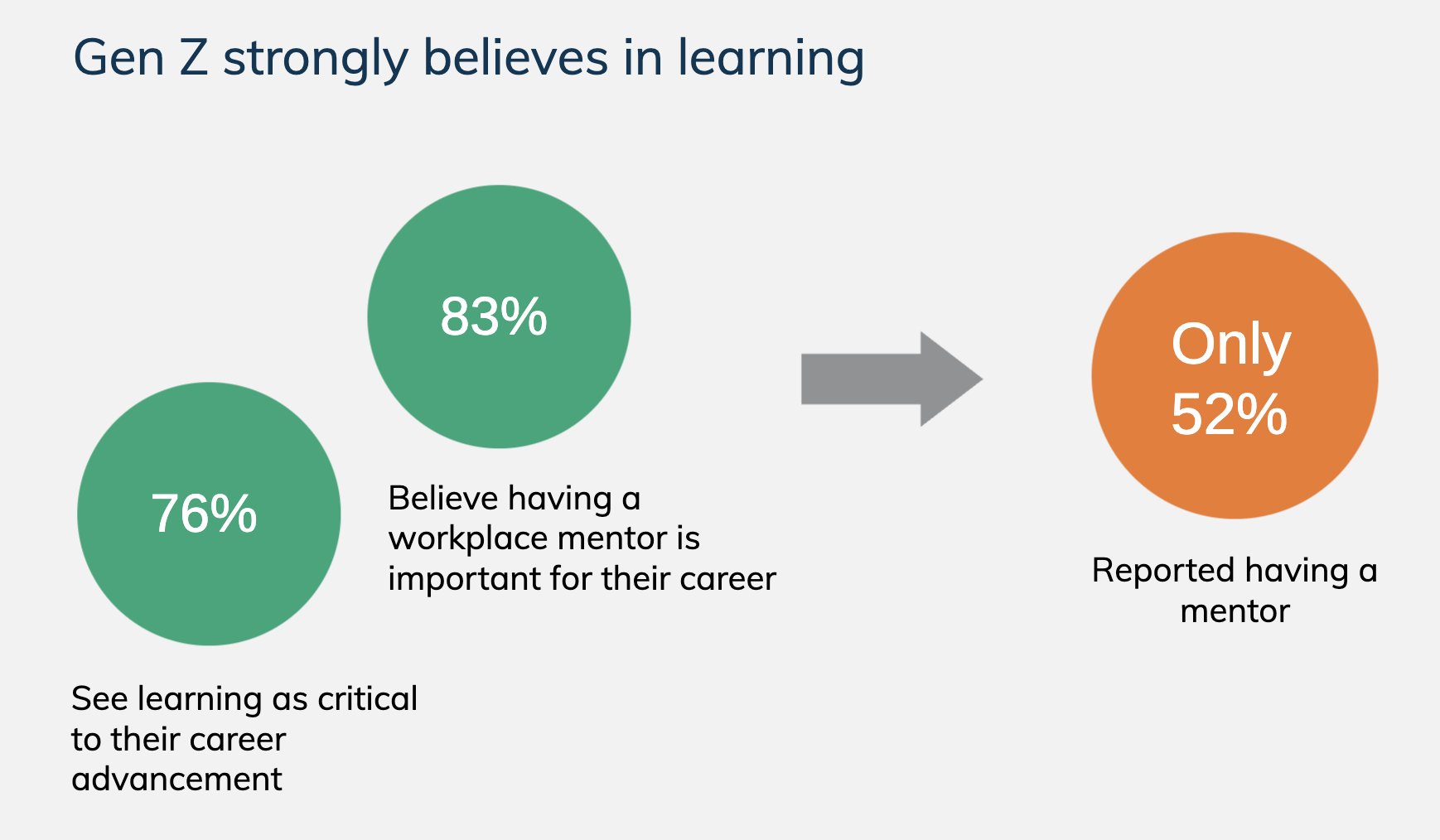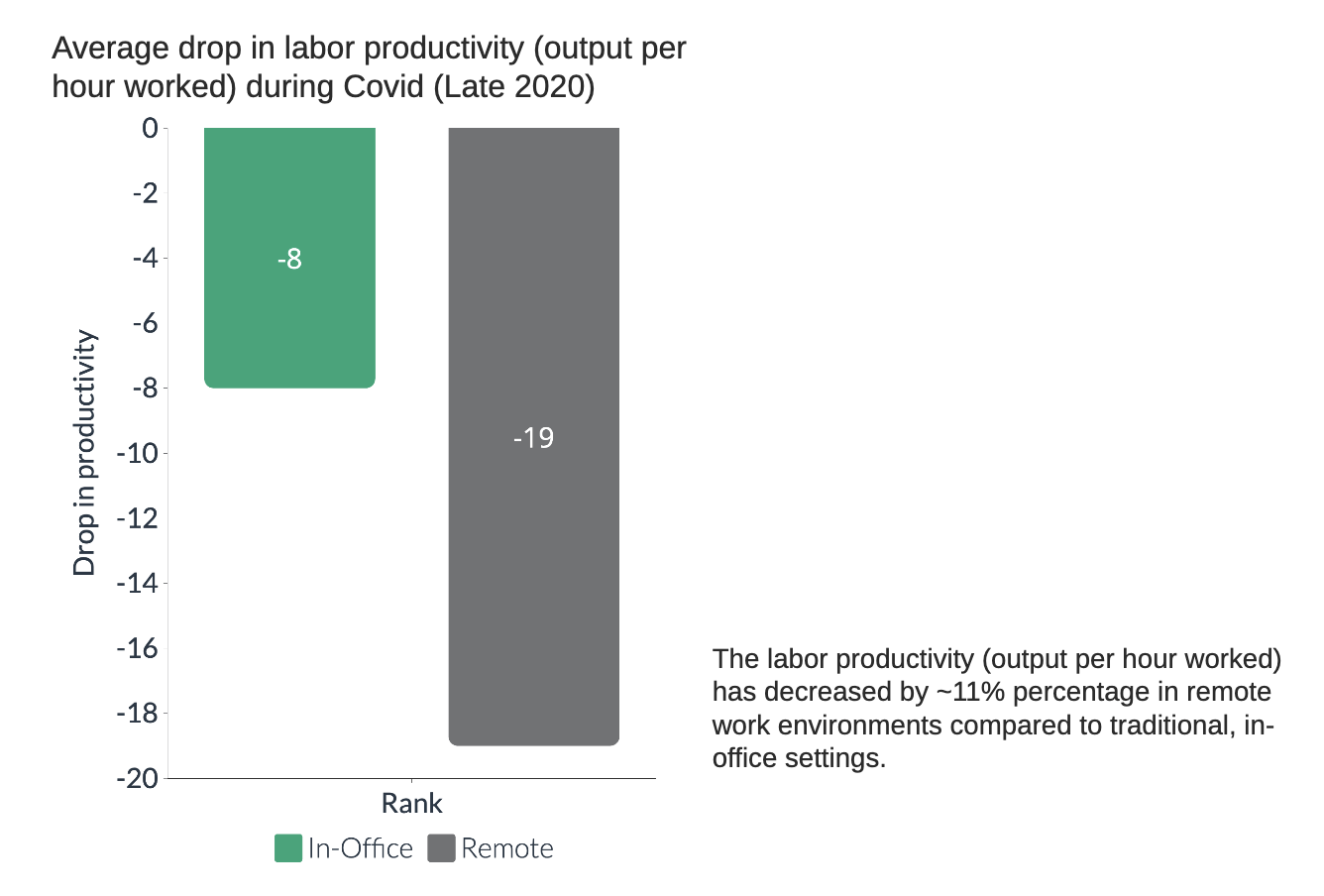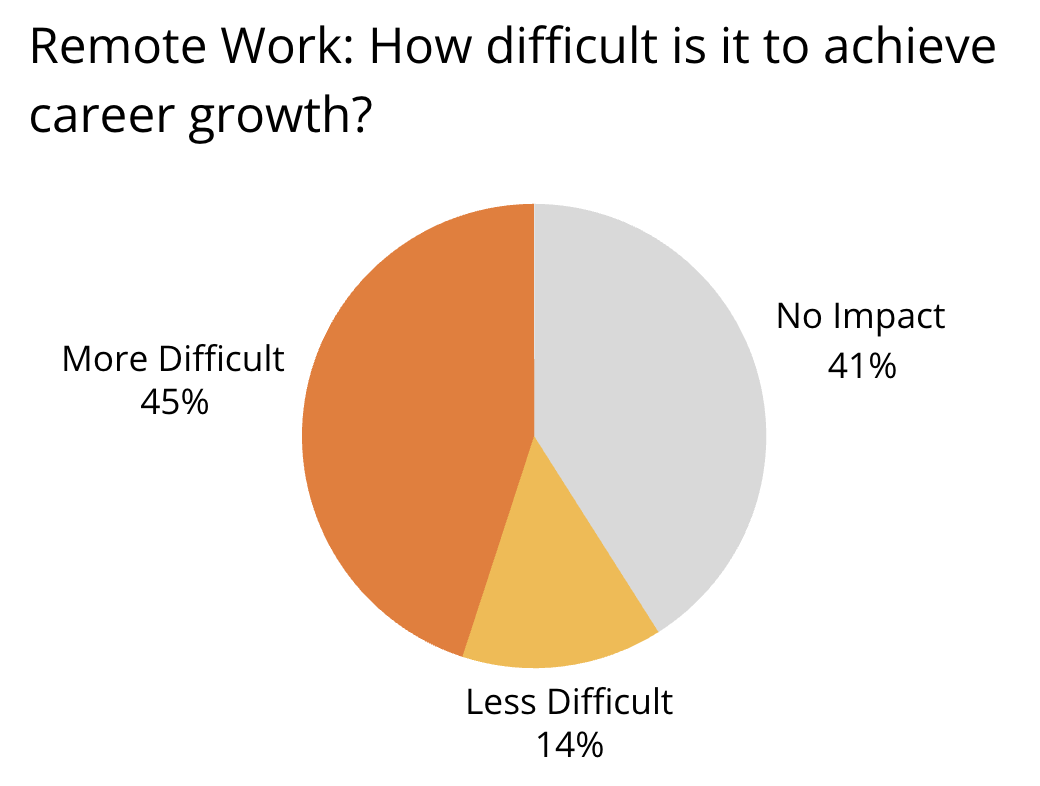The Hybrid Work Solution
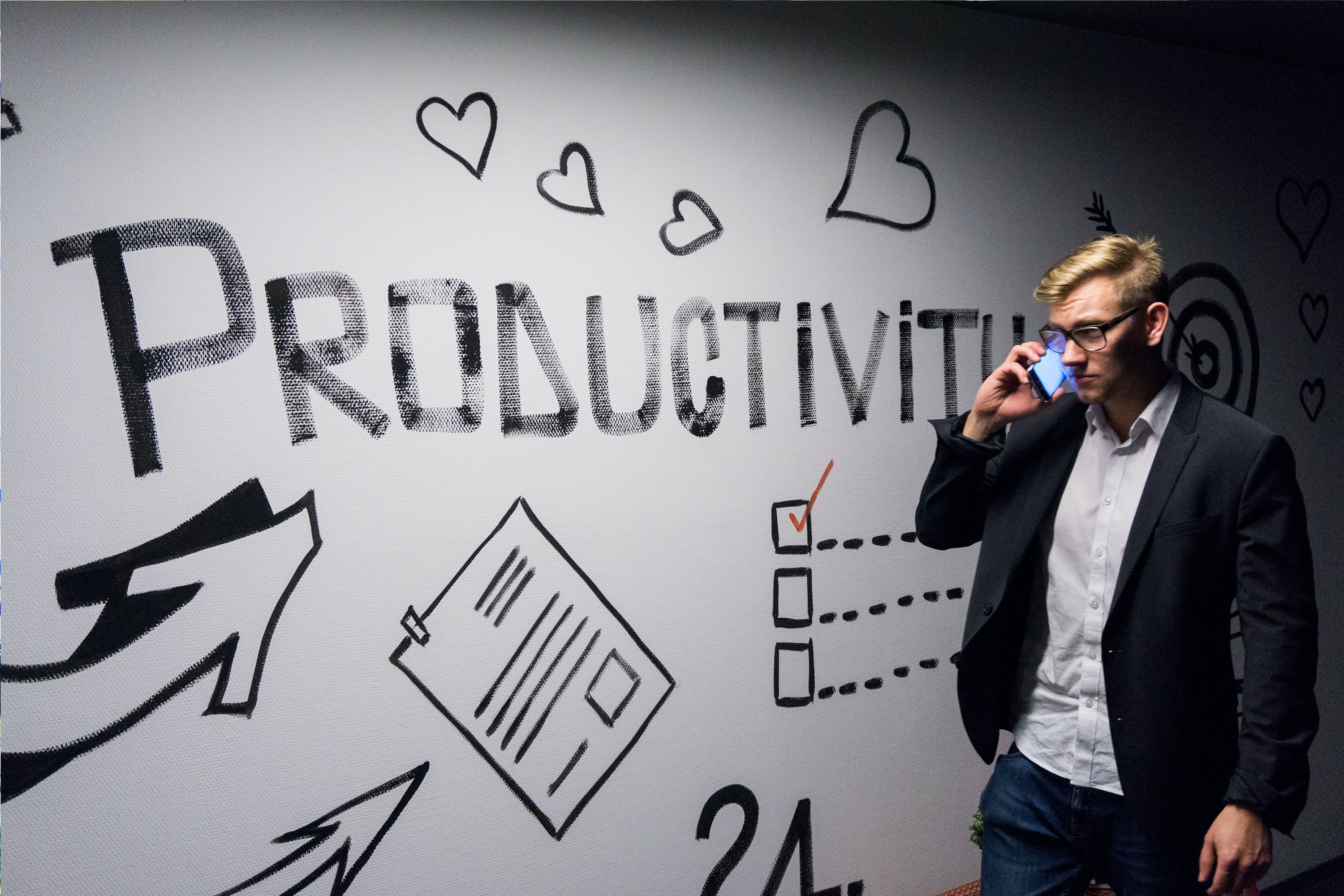
Balancing Career Growth and Productivity for Early-Career Professionals
BreakBreak
This project looks at the trade-offs of remote and hybrid work arrangements, with recommendations for early-career professionals. It focuses on how different work models affect productivity and career success.
Target Audience
Reader's objective: 'As a manager or early-career employee, I want to understand how different work models, affect career development and productivity. I seek practical insights on how to stay productive, engaged, and facilitate career growth in these work environments.'
Increase in Productivity as Reported By Employees
At the beginning of COVID-19, when people had just started working from home, we saw an initial surge in productivity as reported by employees. Here is an example from the US (2020).
Mentorship Importance for Gen Z
As Gen Z entered the workforce, 76% emphasized that continuous learning is critical to their career advancement, highlighting the need for mentorship, which became more difficult to access remotely.
Productivity (output) dropped by 11%
Within a few months, we noticed a drop in productivity levels (output per hour worked). The 8% to 19% drop in productivity is lower than usual productivity levels. This means that labor productivity (output per hour worked) has decreased by that percentage in remote work environments compared to traditional, in-office work settings.
Career Progression Difficulties (Remote Work)
45% of early-career professionals felt that remote work made career progression more difficult, as they lacked in-person mentorship and networking opportunities.
New (COVID-hired) Employees struggled with Career Development
Employees hired during COVID-19 (After March 2020) struggled more than their in-office counterparts, feeling less connected to their teams and at greater risk of leaving their jobs. Managers are also concerned about the support that new employees are getting after moving to remote work.
Rise of Hybrid Work in January 2022
Google Trends for search terms like “hybrid work” and “mental health remote work” started surging and spiked during different phases of the pandemic. This shows how concerns about productivity and work-life balance rose over time.
Decrease in employee struggles due to the Hybrid work model
Hybrid work emerged as the balanced answer, providing both flexibility and structured in-office collaboration to boost engagement and development. We see a decrease in major employee struggles when Hybrid work comes into play. Here, we can see that people struggled a lot in 2021 and 2022, but by 2023, as hybrid work began to take up, these largest issues appeared to have reduced.
Improved Workplace Relationships for Hybrid Employees
We see that hybrid employees were more successful at maintaining relationships with their teams, with many reporting a decrease in struggles like burnout and isolation.
Call To Action - What Can Early Career Employees and Managers Do?

- Adopt Hybrid Work: Encourage managers to implement hybrid work models that balance flexibility with structured in-office collaboration to boost engagement and productivity.
- Foster Team Connections: Promote regular in-person or virtual team interactions to strengthen workplace relationships, reducing isolation and burnout in hybrid settings.
- Leverage Flexibility for Productivity: As an employee, use the flexibility of hybrid work to design a schedule that maximizes your productivity, balancing focused remote work with in-person networking.
- Focus on Career Development: Use hybrid work to your advantage by seeking development opportunities, ensuring continuous career growth in a flexible work model.

